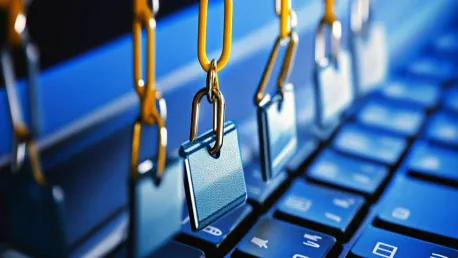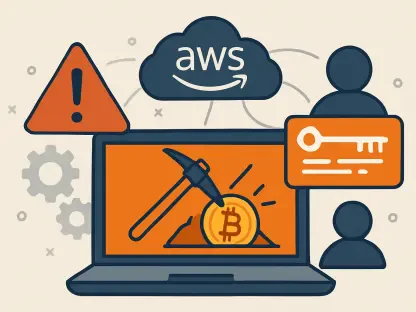Phishing is one of the most prevalent forms of cyber-attacks today, significantly impacting both individuals and businesses. It is characterized by deception wherein cybercriminals manipulate trust to obtain sensitive information such as personally identifiable information (PII) and login credentials. With the rise of remote work, the risks associated with phishing have dramatically increased, making it imperative to understand and defend against these threats. This article delves into the various techniques employed by cybercriminals and suggests methods for defense.
The Essence of Phishing
What is Phishing?
At its core, phishing is a method used by scammers, hackers, and ransomware groups to deceive individuals and organizations into divulging sensitive information. Phishers typically use email or other forms of electronic communication to impersonate trusted entities, tricking recipients into revealing login credentials, credit card numbers, or other personal information. In the digital age, phishers exploit the increased volumes of digital communication, particularly with remote work, to cast a wider net and increase the chances of successful attacks.
The tactics employed are diverse, ranging from simple email scams to complex schemes involving fake websites and social engineering. Cybercriminals adapt quickly to emerging trends and technologies, continuously refining their methods to bypass security measures. This adaptability makes phishing a persistent and evolving threat, demanding constant vigilance and updated countermeasures. Recognizing phishing efforts and understanding how they operate is the first line of defense in safeguarding personal and organizational data.
The Scope of the Threat
According to a 2021 CISCO report, more than 90% of successful data breaches stem from phishing tactics, underscoring the widespread impact of these attacks on cybersecurity. This alarming statistic highlights the necessity of robust cybersecurity measures and awareness training to mitigate the risks associated with phishing. Phishing campaigns can vary in scope and sophistication, but their effectiveness often hinges on the exploitation of human psychology, such as fear, urgency, and curiosity.
Moreover, the financial repercussions of phishing attacks are significant, affecting both individuals and enterprises. For businesses, phishing compromises can lead to substantial data losses, financial fraud, and reputational damage. For individuals, falling victim to phishing can mean identity theft, unauthorized transactions, and a protracted process of recovery. Thus, understanding the scope of the threat is crucial in reinforcing defenses and fostering a culture of cybersecurity awareness.
Varieties of Phishing Tactics
Targeting Individuals vs. Businesses
Phishing tactics vary substantially depending on the intended targets, typically categorized into attacks aimed at home users versus those directed at businesses. Home users often face phishing schemes designed to extract PII for accessing bank accounts or to manipulate scenarios that result in victims sending money to scammers. These typically involve emotional manipulation, such as threats of account suspension or promises of financial gains, prompting hasty and often unguarded reactions from individuals.
Conversely, business users are targeted with more strategic campaigns that aim to gather credentials or other information facilitating unauthorized access to company systems. These attacks may involve spear-phishing, where tailored messages are sent to specific individuals within an organization, often appearing to come from trusted internal or external sources. The goals include data exfiltration, installation of malware, and access to confidential business information that can be exploited or sold in illegal markets.
Common Phishing Examples
A prevalent example involves fake McAfee or Netflix renewal notices, playing on common human concerns like maintaining professional antivirus protection and accessing leisure activities. These attempts often use unprofessional email addresses and link to counterfeit websites, designed to exploit the low cost and broad reach of the internet to attack a vast population base. The narratives usually create a sense of urgency, prompting recipients to act quickly without thorough verification.
Effective phishing messages are increasingly sophisticated, leveraging personalized information and familiar graphics to appear authentic. Cybercriminals invest considerable effort in crafting messages that can deceive even cautious users. The use of company logos, correct terminology, and well-executed design elements helps to reduce suspicion, making recipients more likely to comply with requests. The deceptive nature of these communications necessitates constant scrutiny and validation of unsolicited messages, particularly those requesting sensitive information.
Sophistication of Phishing Attacks
Professionalism in Phishing Attempts
Effective phishing attempts often possess a high degree of professionalism and can deceive even the most wary users. Messages are personalized, persuasive, and frequently appear authentic, using familiar graphics and design cues to replicate trusted communications. Phishers spend significant time researching their targets, using available data from social media and other sources to craft convincing narratives that align with recipients’ interests or activities.
Furthermore, these professional phishing attempts are typically free from easily detectable errors such as spelling mistakes or awkward language, which are often associated with less sophisticated scams. Instead, they employ flawless grammar and contextually appropriate “boardroom speak” when targeting corporate victims. This level of professionalism and attention to detail makes these attacks more challenging to identify and resist, underscoring the importance of robust education and awareness programs.
Advanced Tactics: Whaling and BEC
Phishing schemes become even more sophisticated when targeting top-level executives, a tactic known as “whaling.” These attacks are meticulously crafted, often leveraging insider knowledge of organizational structures and operations. Unlike regular phishing attempts, whaling emails are devoid of spelling errors or crude language; instead, they use sophisticated “boardroom speak” to masquerade as legitimate executive communications. The primary aim is to secure large financial gains or sensitive corporate information.
Variants like the Business Email Compromise (BEC) exploit hijacked company addresses or closely mimicked email addresses to amass further company information and escalate access privileges. In a typical BEC attack, cybercriminals infiltrate the email account of someone within the organization, such as an executive or an accountant, and use it to send requests for funds transfers or sensitive data. The perceived legitimacy of these emails makes them highly effective, leading to substantial financial losses and data breaches.
Mitigation Strategies
Basic Rules to Mitigate Risks
Basic rules to mitigate phishing risks include never submitting PII without initiating the contact yourself, verifying the legitimacy of any information requests, avoiding unsolicited links, and contacting potential businesses through official channels. For example, always double-check email addresses for authenticity, as phishing emails often come from addresses that resemble legitimate sources but contain slight deviations. Additionally, be cautious of misspellings or unusual domain names.
Ensuring software and operating systems are up to date with the latest security patches is another critical measure. Anti-phishing tools and email filters can flag obvious phishing attempts, but vigilance remains crucial, especially with more sophisticated attacks. Employing multi-factor authentication (MFA) adds an extra layer of security, as it requires a second form of verification beyond just a password, making it more challenging for phishers to gain unauthorized access.
Importance of Secure Networks
In a work-from-home environment, secure WiFi networks are critical since unsecured ones may collect transmitted info via packet sniffers. It is essential to use a strong, unique password for your WiFi network and enable WPA3 encryption to safeguard against unauthorized access. Additionally, consider using a virtual private network (VPN) to encrypt internet traffic, adding an extra layer of security when accessing company resources remotely.
Emails appearing official but unanticipated should be flagged to the company’s IT department for validation. Employees should be encouraged to report suspicious emails or messages without fear of retribution, fostering a proactive security culture. Regularly scheduled cybersecurity training sessions can keep employees updated on the latest phishing tactics and reinforce best practices for identifying and reporting potential threats.
Education and Vigilance
Continuous Education
Education remains the sole effective solution to combat phishing. Continuous education is essential due to the ever-evolving nature of phishing scams, encouraging safe internet usage and helping close potential security gaps within business networks. Training programs should be comprehensive, covering the latest tactics used by phishers and providing practical advice on how to recognize and respond to suspicious communications.
Simulated phishing attacks can be an effective way to educate employees by providing hands-on experience in identifying and dealing with potential threats. These simulations can help reinforce the importance of vigilance and demonstrate the real-world consequences of successful phishing attempts. Organizations should regularly update their training materials to reflect new phishing strategies and ensure that all employees, from entry-level staff to top executives, understand their role in maintaining cybersecurity.
Limiting Public Sharing of Information
Phishing stands as one of the most common forms of cyber-attacks today, heavily affecting both individuals and organizations. This technique involves deceit, where cybercriminals exploit trust to acquire sensitive data such as personally identifiable information (PII) and login credentials. As remote work becomes more widespread, the dangers linked to phishing have surged, underlining the need to grasp and protect against these threats. This article explores various tactics used by cybercriminals and offers strategies for protection.
Cybercriminals use a range of methods, including emails that impersonate legitimate sources, fake websites, and malicious attachments, all designed to trick users into revealing confidential information. Awareness and education are crucial in combating phishing. Users should be cautious about unsolicited communications, verify the authenticity of sources, and use security tools like email filters and antivirus software. By staying informed and vigilant, both individuals and businesses can better defend against phishing attacks and mitigate their potentially severe consequences.









